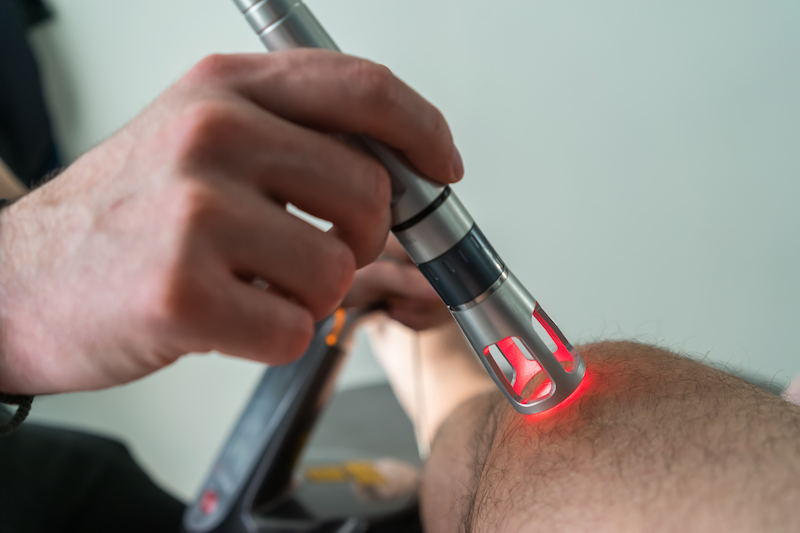Fibromyalgia treatment in Visalia can be more effective with the addition of laser therapy
Although it may sound futuristic, lasers are being used in the medical field right now for a wide range of purposes, and their popularity is growing rapidly. You may have heard of medical professionals like surgeons, dentists and opthamologists utilizing them, but it may surprise you to hear laser therapy can be paired with physical therapy, too. In fact, it might be part of your individualized treatment program if your condition calls for it.
A laser is a device that emits light through a process called optical amplification, and the term “laser” is actually an acronym for light amplification by stimulated emission of radiation. Lasers do not occur in nature, but are created artificially, and they produce a monochromatic (one color) light of a single wavelength in a very tight, narrow beam.
Low-level laser therapy (LLLT) is a non-invasive treatment that makes use of these beams of light for the purpose of reducing pain related an injury or condition. LLLT utilizes red—or close to red—infrared light and directs it to areas that are damaged from injury. When this laser is targeted upon a painful region of the body, particular changes take place within the cells in a process called photobiomodulation. When used properly and appropriately, the expected result of this process is less pain.
In contrast to surgical lasers, the lasers used in LLLT gently pass through the body without breaking the skin or causing any discomfort. For this reason, the risk for side effects after treatment is considered very low.
LLLT is now being incorporated into physical therapy treatment practices with the goal of producing even better outcomes for patients. When applied correctly, LLLT can:
- Reduce the amount of treatment time needed to recover
- Safely alleviate pain
- Reduce swelling from bruising and inflammation
- Increase circulation to damaged cells
As the popularity of LLLT has been growing, studies are emerging that suggest it can be effective for treating a variety of conditions commonly seen in physical therapy clinics, such as sprains, strains, back and neck pain, osteoarthritis, rheumatoid arthritis, carpal tunnel syndrome, plantar fasciitis, tendinitis, frozen shoulder and fibromyalgia. Fibromyalgia affects between 4-6 million Americans with chronic pain and a wide array of other symptoms, often leading to missed days of work or disability. But one study conducted in 2013 evaluated the use of laser therapy on a group of women with fibromyalgia, and had some promising results. Its conclusion states:
This study provides evidence that laser therapy may be a beneficial modality for women with fibromyalgia in order to improve pain and upper body range of motion, ultimately reducing the impact of fibromyalgia.
So if you’re dealing with any type of pain that doesn’t seem to respond to other treatments, it may be time to give laser therapy a try. Contact us for more information on laser therapy and to find out if it’s right for your condition.

